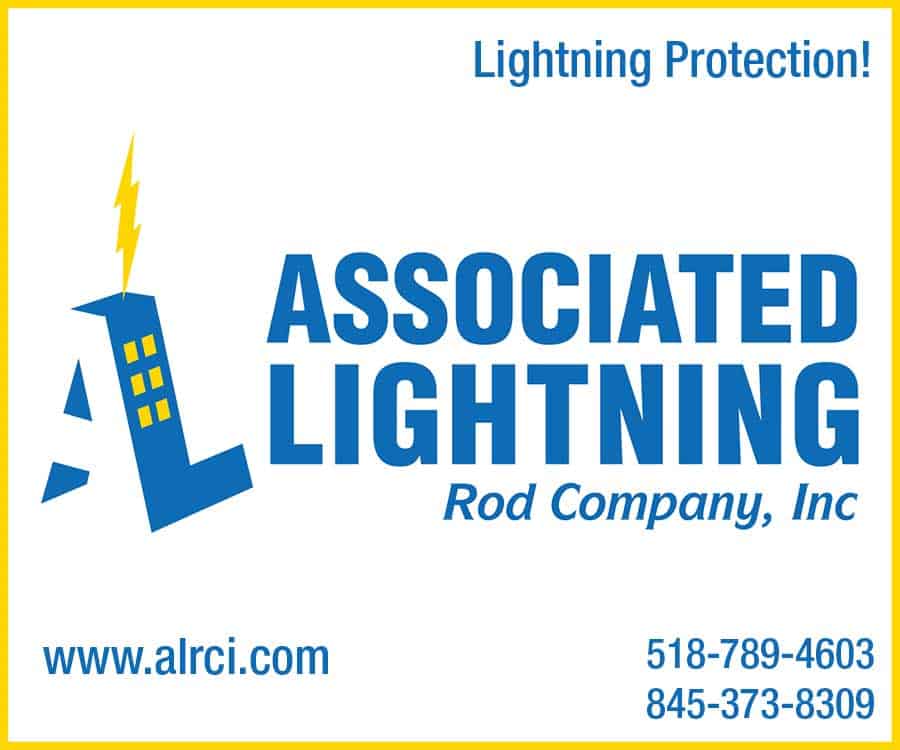Our Environment, Animal Tips & the Great Outdoors
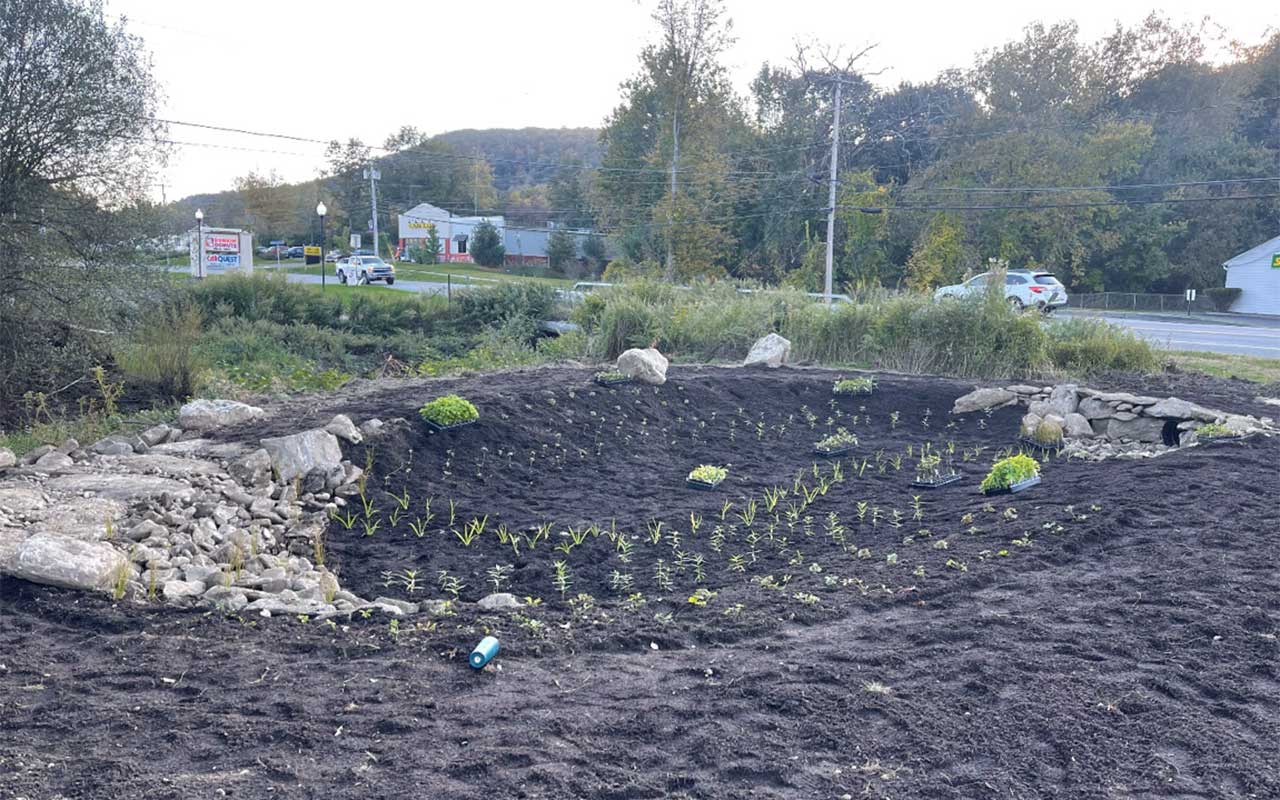
Housatonic Valley Association Installs Rain Gardens in Dover
The Housatonic Valley Association recently installed two rain gardens on the McDonald’s property in Dover Plains, NY. The purpose of the rain gardens is to protect streams from pollution coming from Route 22 and filter the stormwater that is collected from the McDonald’s roof and parking lot.
“This is incredibly progressive landscaping on the cutting edge of how people are starting to think about landscaping for climate change,” said Claire Wegh, the Ten Mile River Watershed manager for the Housatonic Valley Association.
The Housatonic Valley Association is a conservation organization that works to protect the natural character and environmental health of the Housatonic River Valley, from the Berkshires, eastern New York, and western Connecticut to the Long Island Sound.
The installation of the gardens was a collaboration between the Housatonic Valley Association, McDonald’s, J.C. Wong Management, Rennia Engineering, and Earth Tones Landscape Design. Funding for the project was provided by the National Fish and Wildlife Long Island Sound Futures Fund.
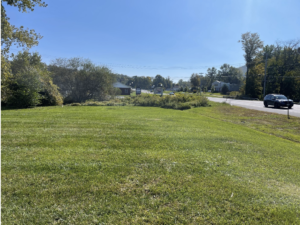
Rain Garden Before
What is a watershed, and why is it important?
Per the US Geological Survey, “a watershed is an area of land that drains all of the streams and rainfall to a common outlet such as the outflow of a reservoir, mouth of a bay, or any point along a stream channel.”
McDonald’s in Dover is encased by two streams: Wells Brook, which is occasionally referred to as Seven Wells Brook, and Stone Church Brook. Each of these streams flows into the Ten Mile River, then to the Housatonic River, and on a larger scale, into the Long Island Sound and Atlantic Ocean.
“Watershed is kind of a misnomer,” said Claire. “Right now, we’re standing in the Wells Brook watershed. If a raindrop fell right here, it would end up in Well Brooks. We’re also in the Ten Mile watershed, and the Housatonic watershed, and the Long Island Sound watershed, and so on. It’s a scalable way of talking about bodies of water and how water flows.”
What is a rain garden?
Rain gardens are shallow, sunken areas of plantings that collect stormwater runoff from roofs, streets, and sidewalks. They’re designed to mimic the natural ways that water flows over and absorbs into land to reduce stormwater pollution.
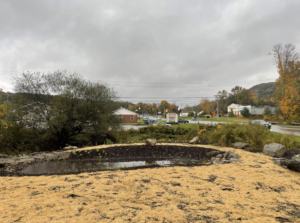
Rain Garden After
Stormwater is water from rain or melting snow that doesn’t soak into the ground, but instead, runs off of surfaces and into waterways. Without being filtered, stormwater collects and transports pollutants into streams and rivers – e.g., oil from roads, salt, chemicals, and even litter. These pollutants threaten the health of waterways; worsen the quality of drinking water; and can damage fish, plant, and animal habitats.
Rain gardens are designed to collect stormwater and filter it through a combination of soil, sand, and gravel. “The filtered stormwater soaks into the ground, provides water to plants, and can help recharge the local groundwater supply. Rain gardens can help prevent flooding, remove pollution, and offer food and habitat to pollinating insects and wildlife.”
“This project was one of the top priority projects identified as part of our watershed planning process,” Claire said. “Impervious surfaces like lawns and parking lots are a big factor in flooding and there are more and more of them in the Ten Mile in the last 15 years or so as storms are getting more extreme. Rain gardens are a really cool way of mitigating flooding and preventing road runoff from entering the waterways.”
The McDonald’s parking lot has three storm drains. Prior to the installation of the rain gardens, a lot of water came through the pipes and dumped into Wells Brook through a culvert. “Now, instead of dumping right into the stream, it gets collected and filtered through here first. You can see that it’s really working. All of that goop-y stuff is sediment, which we’re also trying to prevent from entering the streams,” Claire said. “People don’t think about it as something that’s as bad as salt from the roadways, but sediment depletes the dissolved oxygen in the stream, which is what the aquatic wildlife needs in order to live and breathe.”
Additionally, Wells Brook is an ideal home for native Eastern Brook Trout and other cold-water loving animals. Cold water feeds into Wells Brook from the bedrock beneath the stream, which makes the brook colder than the Ten Mile River, even in the summer. As a result, trout and other cold-water fish migrate to Wells Brook to live and reproduce.
“If we had rain gardens everywhere that stormwater entered bodies of water, then the Long Island Sound probably wouldn’t be as polluted as it is,” Claire said. “Every little thing actually does make a difference, and you can quantify it.”
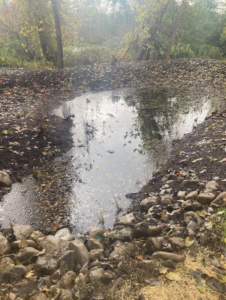
Rain Garden in the back of the parking lot
The rain gardens at Wells Brook also include native plants and pollinators that thrive in water, such as silky dogwood, swamp milkweed, and blue flag iris. “These plants are also salt resistant, so they’re going to absorb the salt from the road and prevent it from entering the streams.”
“Wells Brook is really an amazing little stream. We’ve spent a lot of time, money, and energy to make sure that it stays as healthy as it is,” Claire said.
Ribbon-cutting ceremony
The Housatonic Valley Association will be hosting a ribbon-cutting event for the rain gardens on May 17 from 1-3 pm at McDonald’s. Prior to the ribbon cutting on May 10, the Housatonic Valley Association will be hosting a Rain Garden Information Session / Cleanup Volunteer Event from 1-3pm.
Claire is also working on interpretive signage, both in English and Spanish, to display outside of the rain gardens so people know what they’re looking at and why it’s important.
“A lot of people are feeling anxious about the state of the world and climate change,” Claire said. “All they’re hearing is stories of large-scale catastrophes that are very doom and gloom. One thing that HVA does well is show people how they can make a difference on a small patch of grass, or in this case, in a McDonald’s parking lot.” •
To learn more about the Housatonic Valley Association and the rain gardens, visit its website at hvatoday.org/ or follow it on Instagram at instagram.com/hvatoday.

